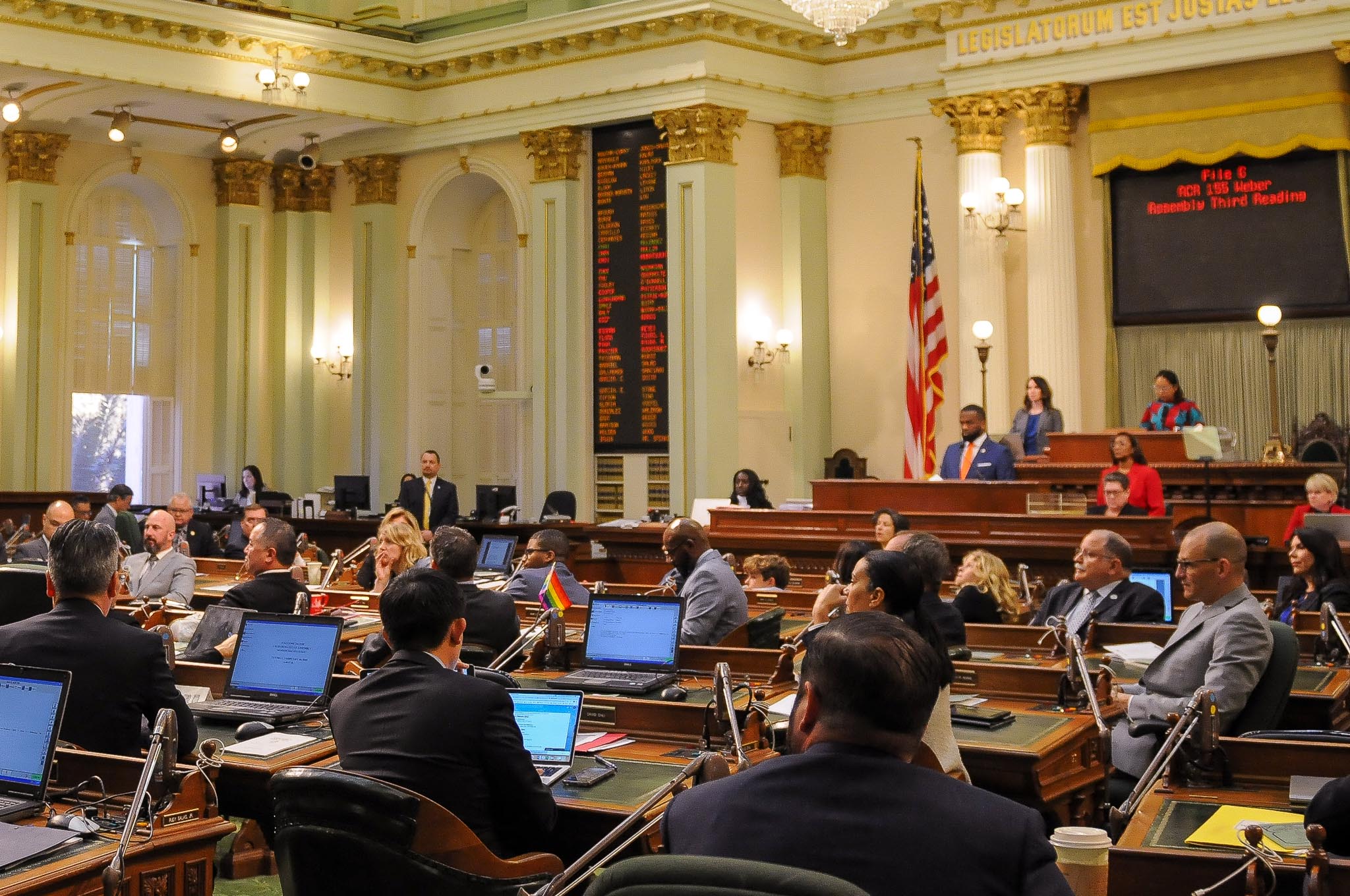
California State Assembly Chamber. (Photo: Kevin Sanders for California Globe)
General Guidance in Reading the Code of Civil Procedure
California code was enacted by the California State Legislature in March 1872
By Chris Micheli, June 11, 2022 8:13 am
California’s statutes are contained in 29 separate codes. The third alphabetically is the Code of Civil Procedure. All 29 Codes have general provisions applicable to reading and interpreting that Code’s sections. The following are selected general provisions of the Code of Civil Procedure:
Section 3 – No part of this Code is retroactive, unless expressly declared.
Section 4 – The rule of the common law, that statutes in derogation thereof are to be strictly construed, has no application to this Code. This Code establishes the law of this State respecting the subjects to which it relates, and its provisions and all proceedings under it are to be liberally construed, with a view to effect its objects and to promote justice.
Section 5 – The provisions of this Code, in so far as they are substantially the same as existing statutes, must be construed as continuations, and not as new enactments.
Section 9 – When a limitation or period of time prescribed in any existing statute for acquiring a right or barring a remedy, or for any other purpose, has begun to run before this Code goes into effect, and the same or any limitation is prescribed in this Code, the time that has already run is to be deemed part of the time prescribed as the limitation by this Code.
Section 10 – Holidays within the meaning of this Code are every Sunday and any other days that are specified or provided for as judicial holidays.
Section 11 – Wherever any notice or other communication is required by this Code to be mailed by registered mail by or to any person or corporation, the mailing of the notice or other communication by certified mail must be deemed to be a sufficient compliance with the requirements of law.
Section 12 – The time in which any act provided by law is to be done is computed by excluding the first day, and including the last day, unless the last day is a holiday, and then it is also excluded.
Section 12c – Where any law requires an act to be performed no later than a specified number of days before a hearing date, the last day to perform that act must be determined by counting backward from the hearing date, excluding the day of the hearing.
Section 13 – Whenever any act of a secular nature, other than a work of necessity or mercy, is appointed by law or contract to be performed upon a particular day, which day falls upon a holiday, the act may be performed upon the next business day with the same effect as if it had been performed upon the day appointed.
Section 15 – Words giving a joint authority to three or more public officers or other persons are construed as giving authority to a majority of them, unless it is otherwise expressed in the Act giving the authority.
Section 16 – Words and phrases are construed according to the context and the approved usage of the language; but technical words and phrases, and others as have acquired a peculiar and appropriate meaning in law, or are defined in the succeeding section, are to be construed according to the peculiar and appropriate meaning or definition.
Section 17 – Subdivision (a) provides that words used in this Code in the present tense include the future as well as the present. Words used in the masculine gender include the feminine and neuter. The singular number includes the plural and the plural number includes the singular.
Section 18 – No statute, law, or rule is continued in force because it is consistent with the provisions of this Code on the same subject; but in all cases provided for by this Code, all statutes, laws, and rules in force in this State, whether consistent or not with the provisions of this Code, unless expressly continued in force by it, are repealed and abrogated. This repeal or abrogation does not revive any former law repealed, nor does it affect any right already existing or accrued, or any action or proceeding already taken, except as in this Code provided; nor does it affect any private statute not expressly repealed.
Section 19 – This Act, whenever cited, enumerated, referred to, or amended, may be designated simply as “The Code of Civil Procedure,” adding, when necessary, the number of the section.
- Legislative Policy on Bay Area Pilotage - July 26, 2025
- Small Craft Harbors and Waterways in California - July 25, 2025
- Disability of Parties in Civil Actions - July 24, 2025








2 thoughts on “General Guidance in Reading the Code of Civil Procedure”